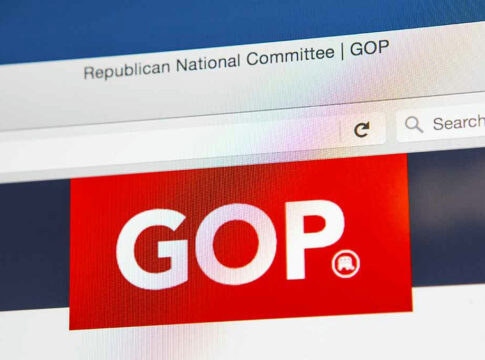Federal agencies grind to a halt as the GOP stands firm, refusing to back down on a shutdown battle that’s shaking the nation and challenging the very limits of government accountability.
GOP Leverages Shutdown to Advance Conservative Priorities
On October 1, 2025, the United States federal government shut down after Congress failed to agree on a funding bill. The Republican-controlled House passed a continuing resolution packed with conservative priorities, but the Democrat-led Senate rejected it, sending both chambers into a legislative deadlock. Speaker Johnson and President Trump made clear the GOP would not compromise, betting that Democrats would bear the political cost for prolonging the shutdown. The party’s strategy signals a willingness to let the shutdown continue until key conservative demands—like spending cuts and limits on federal authority—are achieved.
Both sides have resorted to aggressive messaging, with Trump using social media and AI-generated content to mock Democratic leaders. The House extended its recess, standing firm on the passed resolution and refusing new votes, while the Senate repeatedly failed to advance any compromise bill. This shutdown is the first since 2019 and marks the third under Trump’s leadership, underscoring the deep partisan divide gripping Congress. The standoff has become a high-stakes battle over the future of federal spending and policy direction, with little sign of movement toward resolution.
Impact on Federal Agencies, Employees, and Communities
Federal agencies have activated contingency plans, leading to widespread furloughs and service disruptions. Hundreds of thousands of employees and contractors face delayed paychecks, while military personnel and recipients of federal aid—including food assistance and disaster relief—are left in limbo. Businesses that rely on government contracts or regulatory oversight are also affected, amplifying the economic fallout. The shutdown’s immediate impact is felt acutely by vulnerable populations, who depend on uninterrupted access to public programs. Public frustration grows as essential services—from healthcare to transportation—are put at risk, fueling criticism of legislative dysfunction.
The long-term consequences of repeated shutdowns threaten to erode public trust in government and deepen political polarization. Economists and policy analysts warn of cumulative economic losses, lost productivity, and delayed activity across sectors. The ongoing impasse highlights the cost of partisan brinkmanship and the weakening of bipartisan negotiation norms, with experts cautioning that using shutdowns as bargaining tools undermines stability and global credibility. The GOP’s strategy, while energizing its conservative base, risks alienating moderates and reinforcing perceptions of government overreach and dysfunction.
Stakeholders and Power Dynamics in the Shutdown Standoff
Key figures shaping the shutdown include Speaker Mike Johnson, President Donald Trump, Senate Majority Leader Chuck Schumer, and House Minority Leader Hakeem Jeffries. Trump exerts significant influence over GOP strategy and messaging, with Senate Republicans like JD Vance and Rand Paul backing the hardline approach. Democrats, led by Schumer and John Fetterman, demand expanded health spending and reversal of Trump-era reforms. Moderate senators occasionally break party lines but have not shifted the outcome. Federal employees, military personnel, and aid recipients remain caught in the crossfire, while businesses and local governments navigate operational disruptions.
Bipartisan proposals—such as paying military personnel during the shutdown—have been introduced but failed to advance. The entrenched positions of both parties show no sign of softening, and no significant negotiations are underway. Federal agencies continue to execute shutdown plans, and the House’s extended recess signals that a resolution is not imminent. The shutdown’s legacy will be shaped by the political fallout and the public’s reaction to protracted dysfunction and hardship.
Republicans and the Trump administration are preparing themselves for a lengthy Democrat caused government shutdown. They are readying for Democrat lies, misinformation, propaganda and obfuscation. https://t.co/nyawbi10tk GOP sets the stage for extended shutdown – The Hill
— alaphiah (@alaphiah) October 15, 2025
Conservative commentators argue the GOP is justified in using the shutdown to force policy concessions, viewing it as a necessary stand for fiscal responsibility and limited government. Liberal analysts counter that the refusal to compromise is irresponsible and harmful to the public. Mainstream news outlets and nonpartisan think tanks consistently report on the causes and impacts, though partisan interpretations of blame persist. The shutdown remains a defining moment in the struggle over America’s political future and the role of federal authority in everyday life.
Sources:
2025 United States federal government shutdown – Wikipedia
Government shutdowns in the United States – Wikipedia
Government Shutdown Advisory – Holland & Knight
Government Shutdown Clock – The White House

